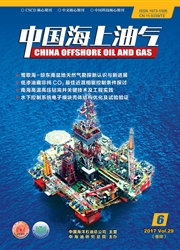

 中文摘要:
中文摘要:
针对深水高压气井测试生产过程中频繁开关井作业诱发生产管柱耦合振动失效安全问题,以南海某深水高压气井为例,充分考虑管柱与天然气之间的泊松耦合和摩擦耦合作用,建立了深水高压气井生产管柱和天然气耦合振动模型,分析开关井作业过程生产管柱振动特性,建立并优化深水高压气井开关井作业窗口。研究结果表明:考虑流固耦合作用下管柱固有频率有所降低,不易发生"锁频"现象;开关井作业过程中管柱振动幅值随着天然气产量增大而增大;对于大产量油气井,延长开关井作业时间,并减小扶正器间距,可有效扩展开关井作业窗口,减少开关井作业对深水油气生产管柱的损伤。上述成果可为深水高压气井生产管柱设计及安全作业提供理论依据和工程指导。
 英文摘要:
英文摘要:
Aiming at the vibration failure problem of production strings arising from the frequent starting-up and shutting-in operations in high pressure deep water gas well testing, such a well in the South China Sea was taken as an example, and a string-gas coupled vibration model was established with the full consideration of the Poisson and friction couplings between the string and gas. The vibration characteristics of the string during the starting-up and shutting-in operations were analyzed, and also the optimized operation envelope for starting-up and shutting-in was established. The results show that the natural frequency of the string slightly decreases under the fluid-solid coupling effect, but the phenomenon of frequency locking do not occur. The vibration amplitude during starting-up and shutting-in operations increase with the increase in gas production. The starting-up and shutting-in operation envelope could be expanded, and the damage to the string could be decreased by extending the starting-up and shutting-in duration time and reducing the spacing between centralizers for large production gas wells. The conclusion here can provide a theoretical basis and engineering reference for the design and safe operation of production strings in the high pressure deep water gas wells.
 同期刊论文项目
同期刊论文项目
 同项目期刊论文
同项目期刊论文
 期刊信息
期刊信息
